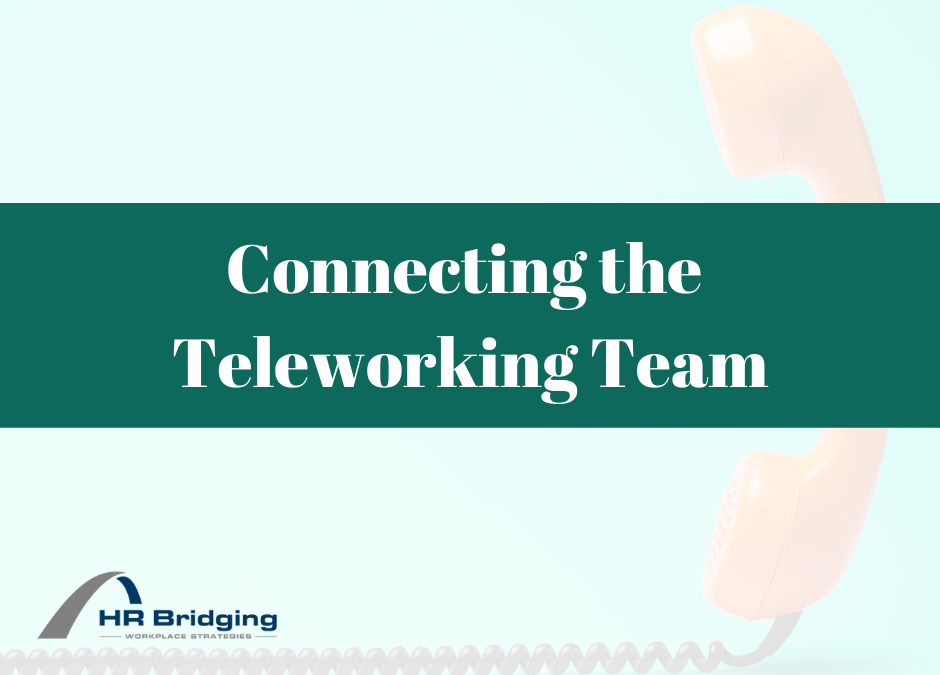
For some companies, teleworking has been practiced for years and is engrained in company culture. But for many organizations today, working remotely is a completely new venture and not easy for some managers. If circumstances had been different, and businesses had months to transition employees to working from home, structure and balance would have been much easier to find.
Now with telework extensions announced to try and balance the curve, organizations continue to reevaluate operational needs, productivity and compliance with employees working from home. As we meet with clients (virtually, of course) we want to share some of the most common questions over the past few weeks:
- How do we ensure our team continues to perform and serve the organization’s needs while teleworking, especially during these unique circumstances?
- How do we manage teleworkers and still hold employees accountable, maintaining productivity in our staff?
- How is this period of teleworking going to impact our organization in the long run?
After fielding these questions, we’ve put together a quick list on how to revisit the teleworking setup or as we’re seeing the second wave of economic challenges, create a well-connected, productive, and balanced teleworking team.
Clearly Set and Define Procedures and Expectations
No need to throw out your pre-epidemic management style but consider a need to adopt a few other methods to effectively coach and guide during this period of teleworking. Start with asking yourself a few questions just to quickly get on track with the fluid environment:
Do your employees track their time in the office? If so, they should probably track their time at home and if non-exempt, hourly teleworkers should be required to do so.
Do certain departments have a standing meeting every week to discuss progress on key projects? This will take work, be intentional. While scheduling may not be as cut and dry, that meeting should still stand. Just as there are a clear set of guidelines for work within your office, there should be a clear set of guidelines for your teleworking staff that balance needs at home while continuing to contribute in their position. Here are a few additional questions to ask yourself as you manage your own style:
- How available do I expect my team to be during this time and does it align with their telework setting?
- How do we clearly communicate project expectations, establish timelines, and measure success? Have they contributed to the discussion which yields better buy-in?
- What procedures can we put in place to ensure we are communicating frequently and effectively, and how do we track progress? What if there are delays that need to be communicated?
Communicate Early, Often, and Openly
The greatest skill teleworking requires is strong communication between all members of the team yet led by you, the manager. Consider using familiar services that allow you to create team chats or forums to communicate on projects rather than emailing team members individually when multiple parties are involved. In an office setting, this may be effective, but when your entire team is working remotely, having communications open between the team not only creates accountability, but helps ensure that nothing falls through the cracks of miscommunication. It, more importantly, allows supportive interaction and engagement within the team.
Encourage Breaks and Boundaries
Working remotely can easily blur the line between work and home, causing employees to become overworked and burnt out. Due to the uncertain nature of the ever-changing COVID-19 situation, employers must not only be vocal on the subject of employees creating a positive work/life balance but serve as a supportive resource during this time. Each team member will have specific needs, individualized needs. Here are a few ideas:
- Even if your team has never tracked their time before, now may be a good time to start to help prevent burn out sharing ideas and options to managing their time.
- Encourage each team member to set “office hours” to better prepare and focus when necessary yet factoring in time for family and themselves.
- Practice positive communication and highlight employee successes in the group to recognize a job well done.
- Build trust by being transparent about company changes, requirements, project updates, etc.
Balancing operational needs, employee’s teleworking and compliance is key!
We’re open and here to help with our complimentary assessment and consultation during this crisis!
HR Bridging, a division of McCartney Resources, is an established Human Resources firm with experienced, certified professionals ready to assist. Our team of HR experts have extensive experience in human resources, solid business acumen and a strong understanding of operations and objectives – spanning a wide variety of industries. Call today (866) 477-8728 or email us at info@HRBridging.com.



